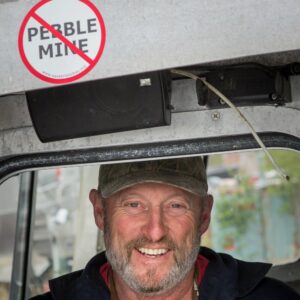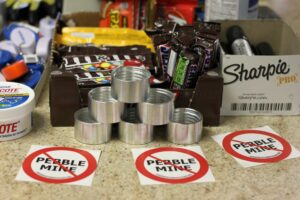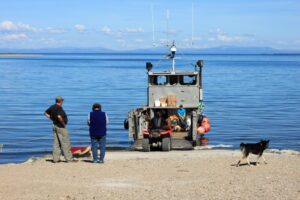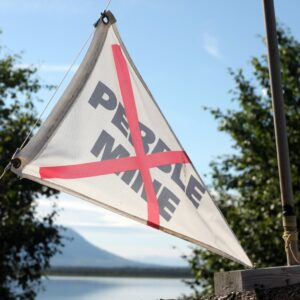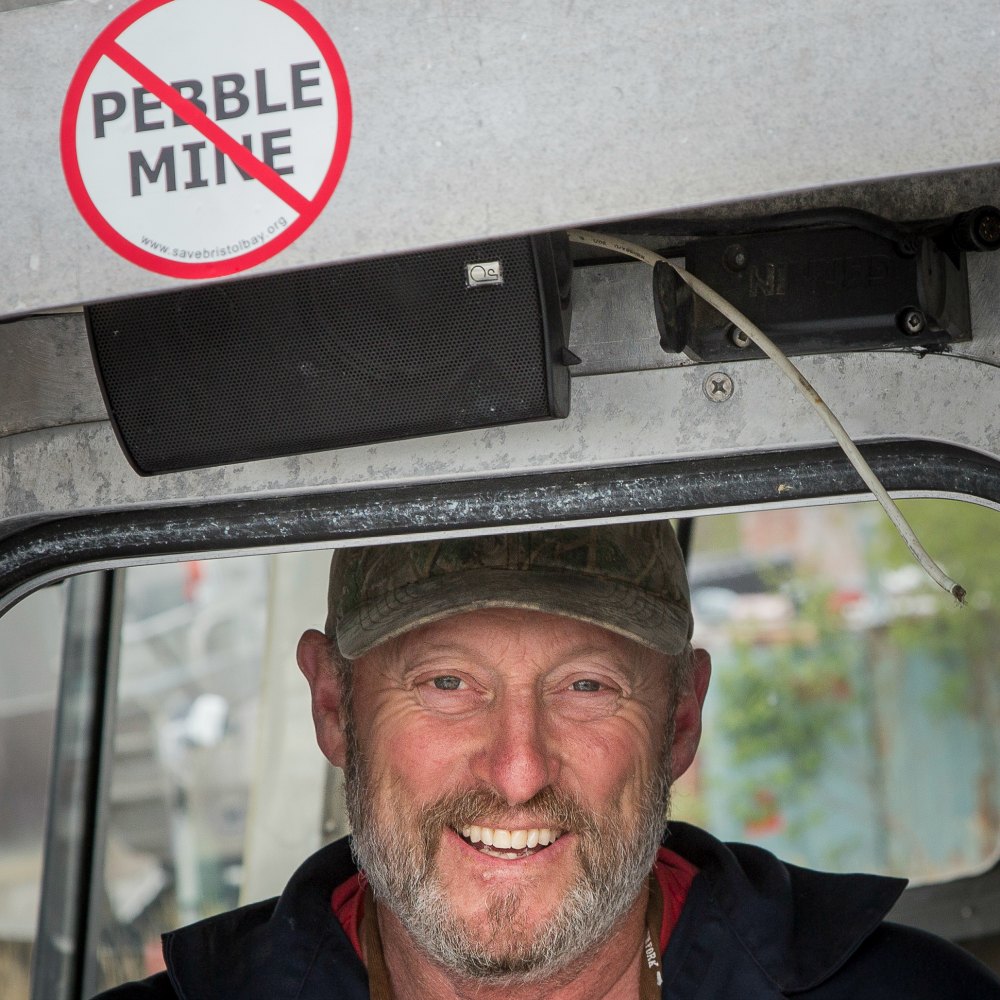
Pebble mine PR prompts Bristol Bay eye roll
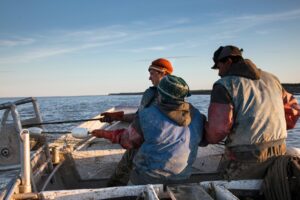
Fishing defines Bristol Bay, home to the largest wild sockeye salmon fishery in the world. (Photo by Donald Blank).
The people of Bristol Bay spend a lot of time outside—on the river fishing for white fish and salmon, and in the wilderness hunting and gathering food. They take care of the things they use and need to make them last. They do the same for the Bristol Bay watershed, a landscape of connected lakes, ponds, streams and rivers that sustains the largest remaining sockeye fishery in the world.
The watershed is integral to the culture, subsistence and way of life for the Alaska Native people of Bristol Bay. The area also provides enduring employment to thousands of people who work in commercial fishing. The people who call Bristol Bay home oppose the proposed Pebble mine because it threatens their livelihood.
The threat has recently intensified. Last week, the Canadian conglomerate behind Pebble cut a backdoor deal with the Environmental Protection Agency.
Pebble’s handpicked panel serves Pebble’s interests only
To capitalize on the deal, Northern Dynasty (Pebble’s parent company) started putting together an “advisory” panel of handpicked representatives. Pebble’s goal for the panel is clearly stated in the letter to its chosen participants: “to design the best possible mine development project…”
We have seen this before. Pebble paid the Keystone Center, which designs and convenes public stakeholder processes, to review and discuss baseline scientific data in public dialogs in 2010 and 2012. Pebble refused to make its raw data available to the public, disregarding Keystone’s own protocol, and subjecting Keystone to the same criticism as Pebble for making a purported unbiased public process very uninformed and un-public.
Now, Pebble wants to do it again, only this time by directly controlling the proceedings. A Pebble-funded and directed panel can only serve one interest and outcome: Pebble’s. By courting the “right” people in an effort to create the illusion of a diversity of viewpoints, Pebble hopes to make the panel’s inevitable conclusion to support the mine legitimate. It will use the panel’s work as evidence of listening to local voices and giving the Alaska and regional perspective a seat at the table.
Truth is, no one wants a seat at a table where they’re force-fed something counter to their own interests and health. The majority of Bristol Bay residents have said repeatedly that the healthy option is “no mine”—on every level. Asking (and offering payment to) a few people to represent the opposition on a panel with the clearly stated goal of designing a mine does not demonstrate independence or diversity. It represents well-funded PR.
Exploiting communities for profit
Mining companies have used these tactics for a long, long time. They divide communities. They co-opt local voices. They entice people with jobs, monetary rewards, connections and other promised benefits. What they don’t do is acknowledge the values of those who live and thrive on the land the companies want to waste.
“Of course we want to talk about any mine in Bristol Bay,” said Myrtice Evalt, Interim Executive Director of Nunamta Aulukestai (Nunamta), a coalition of Bristol Bay Alaska Native village corporations and tribes that works to protect Bristol Bay from unsustainable development. “It’s our home and we should have a say. But any talk must include the option of no mine as a serious and equal choice. Pebble had plenty of time to do that years ago, but it tried to bully its way into Bristol Bay. Nunamta has told Pebble we oppose this mine. The people of Bristol Bay and Alaska have told them we oppose this mine. Pebble does not listen when we say ‘no.’ It ignores us, harasses us, and spends millions of dollars on lobbyists and PR people to make it sound like we never really meant ‘no’ in the first place. We know what we mean and we mean ‘no Pebble mine.’”
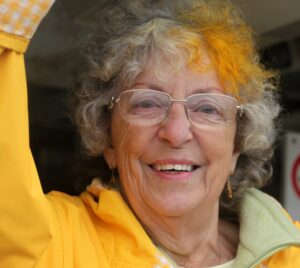
Joanne Nelson opposes the mine, and so do over 80 percent of Bristol Bay residents. (Photo by Donald Blank)
Bristol Bay and Alaska doing fine without the Pebble mine
Pebble is not dead, but it faces overwhelming opposition from Bristol Bay residents and Alaskans. It has been called “worthless” by an investment firm. It has tried to silence or harass people who oppose it.
When the Alaska Supreme Court upheld the rights of the people to have a say in Pebble permitting decisions, over 1,000 Alaskans responded. Their comments prompted the Alaska Department of Natural Resources to require an unprecedented $2 million bond and other stipulations on a run-of-the-mill permit issued to Pebble in April 2017.
The majority of Alaskans and over 80 percent of Bristol Bay residents oppose the Pebble mine.
People are making and losing money on Northern Dynasty stocks and a mine that has held the people of Bristol Bay hostage for over a decade. These Alaskans want their fish, their culture and their way of life protected from Pebble. They persist because they know that the true value of Bristol Bay is clean water and sustainable fisheries.
Pebble needs to stop playing games and propping up its image. If true to its word when it says it will listen to the people of Bristol Bay, well, the people of Bristol Bay and Alaska have spoken. They want Pebble out.



